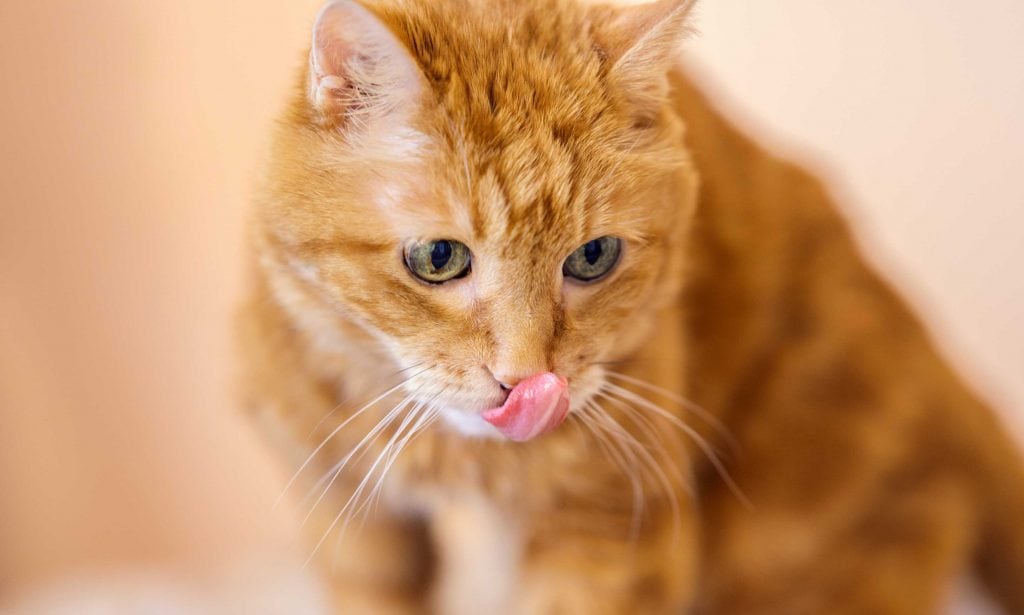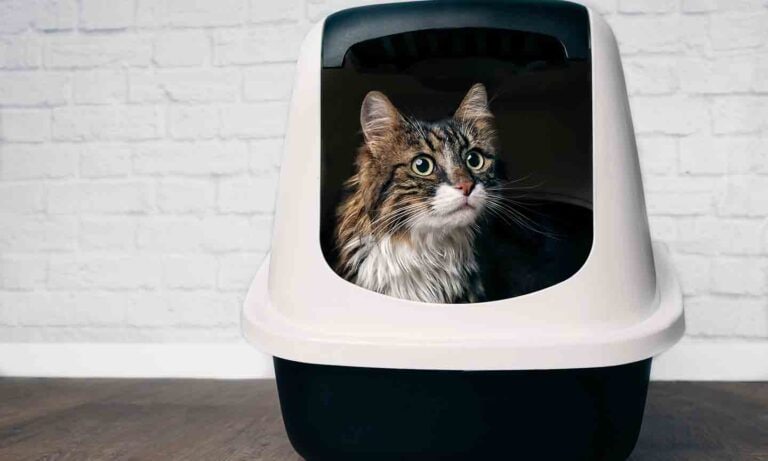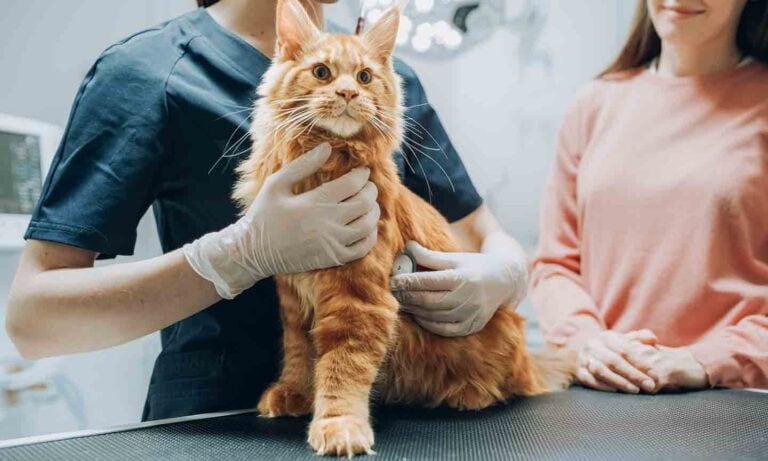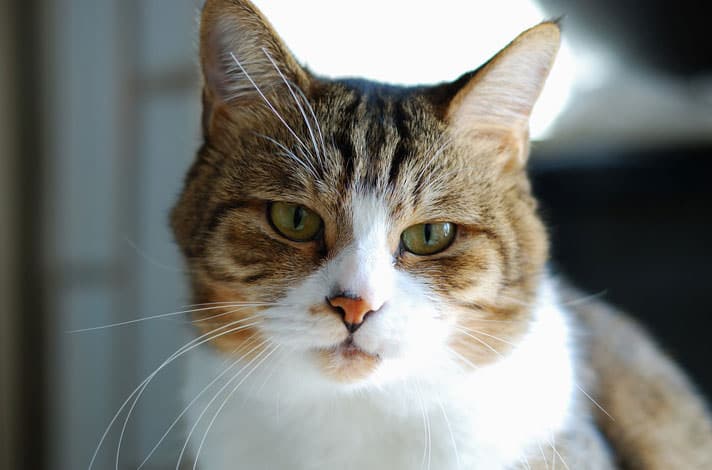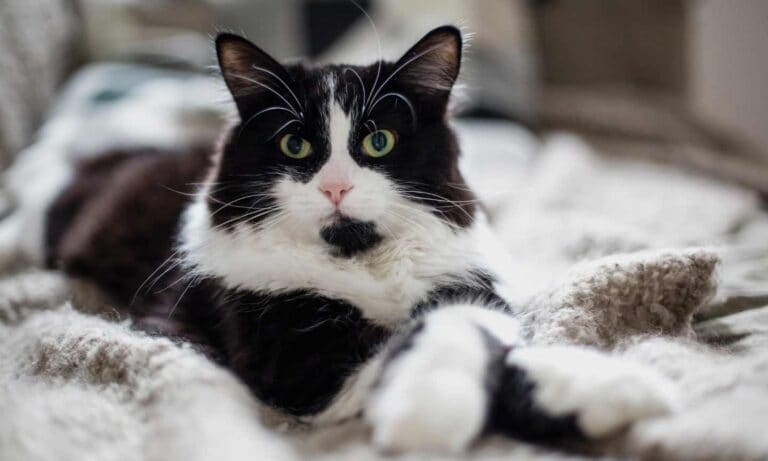You’ve noticed your cat’s lip is swollen—now what do you do?
As a pet parent, your cat’s health is always a priority, and it can be alarming to discover that something is amiss with your feline friend. One issue that sometimes comes up with cats is lip swelling.
We spoke to two vet experts about the most common causes of lip swelling in cats, the symptoms associated with them, how to treat them and when to call the vet about your cat’s swollen lip.
Lip Swelling Causes, Symptoms and Treatments
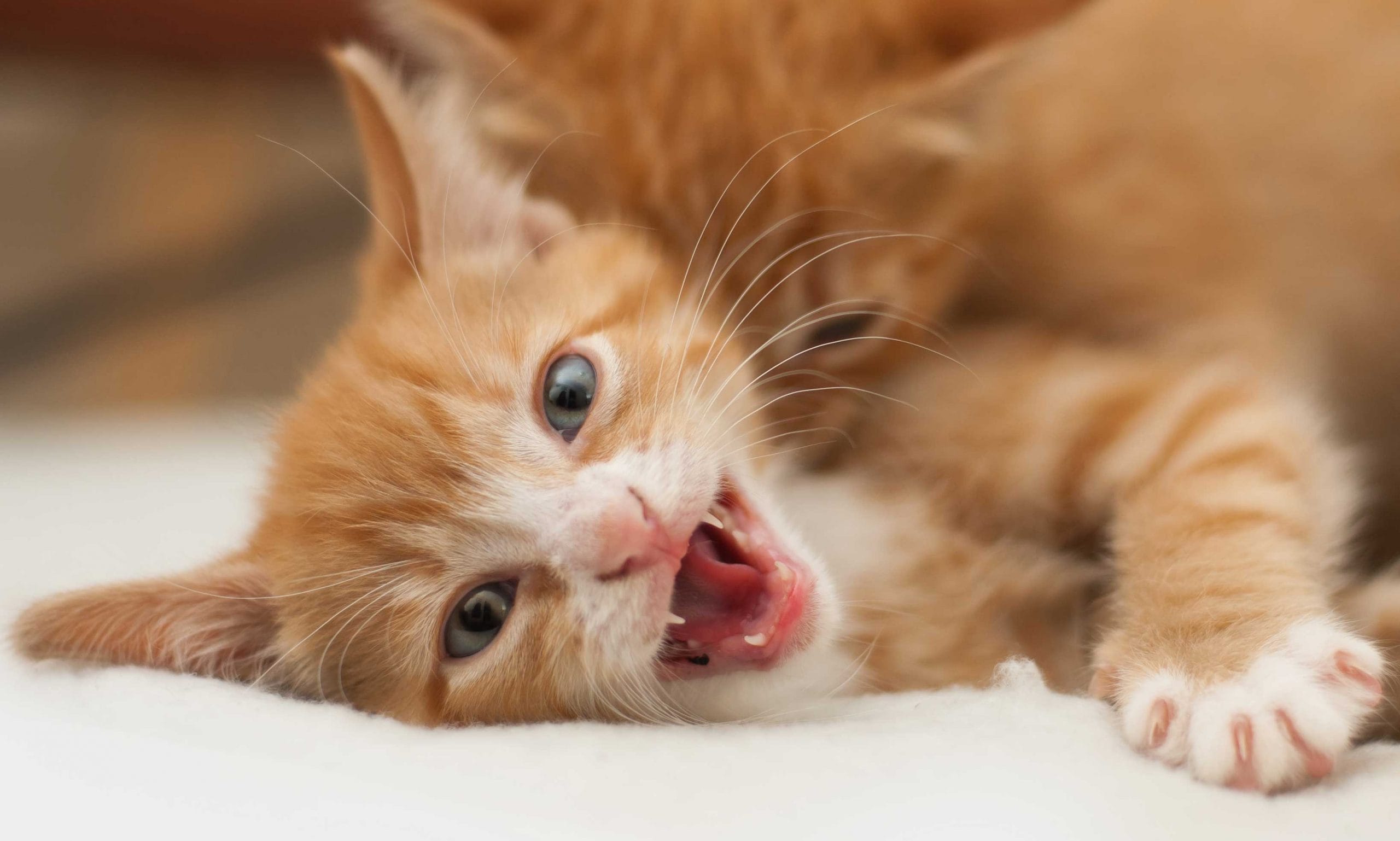
Lip swelling causes include the following, according to Dr. Sarah Jacobs, DVM, an emergency veterinarian at Veterinary Emergency Group in Clifton, NJ:
Common Causes of Lip Swelling in Cats:
- Eosinophilic granuloma complex
- An abscess
- Feline acne
- Oral and facial tumors
Not a Cause: If you’re looking to rule out potential reasons for the swelling, the following conditions are infrequently or never the underlying cause of a cat’s swollen lip, according to Dr. Jacobs:
- Autoimmune disease
- Fungal infections
- Stomatitis
- Dental disease or dental problems
Now let’s take a look at each of the four common potential causes, symptoms to look for and possible treatment options. Keep in mind that this list isn’t exhaustive, and it’s always possible another issue is the underlying cause of your cat’s swollen lip. Check in with your vet.
1Eosinophilic Granuloma Complex
Eosinophilic granuloma complex, sometimes referred to as a “rodent ulcer,” is a broad name for three different conditions that cats can experience on various body parts.
This skin condition presents itself usually in one of three ways: indolent ulcer, eosinophilic granuloma or eosinophilic plaque, says Arnold Plotnick, DVM, a now-retired vet who was formerly the founder of Manhattan Cat Specialists, a feline-exclusive veterinary practice in New York City.
The eosinophilic granuloma form “occasionally presents itself as a cat’s ‘fat lip’ involving the lower lip,” he says.
According to Cornell, the most likely cause of an eosinophilic granuloma in a cat is an allergic reaction following a bite from a mosquito, flea or mite. However, other possible causes include pollen, a food allergy or a reaction to medications such as antibiotics or those used for heart conditions.
Learn more about eosinophilic granuloma complex in cats.
What Symptoms Should I Look For?
Eosinophilic granuloma complex will resemble a raised lesion, and it can be on the upper and/or bottom lip “at the margin between haired skin and the inside of the mouth,” Dr. Jacobs says.
How Is It Treated?
Eosinophilic granuloma complex treatment generally requires steroids or other immunomodulatory medications, like Atopica.
2An Abscess
An abscess is basically a pocket of pus. Your cat can develop one anywhere on their body.
A skin infection that causes an abscess could be the cause of your cat’s swollen lip when the abscess is around or on their mouth.
What Symptoms Should I Look For?
An abscess often looks like a swollen lump. If you see it, you may notice it’s red. It can feel either hard or compressible to the touch.
How Is It Treated?
An abscess usually needs lancing and draining, and treatment will include pain meds and antibiotics for your cat.
3Feline Acne
Feline acne is a bacterial infection of the hair follicles, Dr. Plotnick explains. It occurs when the hair follicles on a cat’s skin become blocked.
Like humans, cats can develop whiteheads and blackheads that can turn into pimples if they experience infected hair follicles. Cat chin acne can be a source of swelling on the cat’s chin, Dr. Plotnick notes, and that can extend and result in a swollen bottom lip.
What Symptoms Should I Look For?
Feline acne often appears on the cat’s chin. You may notice bumps, but it can also look like spots of dirt. If there’s swelling involved, you should be able to see it.
How Is It Treated?
Feline acne treatment often requires disinfecting or changing the cat’s food bowl at home. A common culprit of feline acne is a dirty food bowl or water bowl. Bacteria can grow on the bowl and that can infect your cat’s skin. This happens more with plastic bowls than stainless steel bowls. Ceramic dishes can also develop cracks, which can trap bacteria and lead to cat acne.
Your vet may also clean the affected area and trim the firm and apply a topical treatment.
4Facial and Oral Tumors
Facial and oral tumors occur when cells begin to grow abnormally on the face or in the mouth. They can be cancerous or non-cancerous, and when they are on or near a cat’s mouth, they can be the source of the cat’s swollen lip.
Because cancer is a scary word, cat lovers who have discovered lip swelling often look up the worst-case scenario. Squamous cell carcinoma, a type of cancer that can be very aggressive, is the most common type of oral tumor in cats and can develop anywhere in their mouth. Squamous cell carcinoma tumors look more like open wounds, Dr. Jacobs says.
What Symptoms Should I Look For?
Oral tumors and facial tumors can look like open wounds. A cat may also be uncomfortable or unable to close their mouth all the way or they may drop food, according to Dr. Jacobs.
How Is It Treated?
Oral tumors that are potentially cancerous will usually need to be addressed by a specialist, so your vet will make a referral.
What Do I Do About My Cat’s Swollen Lip?
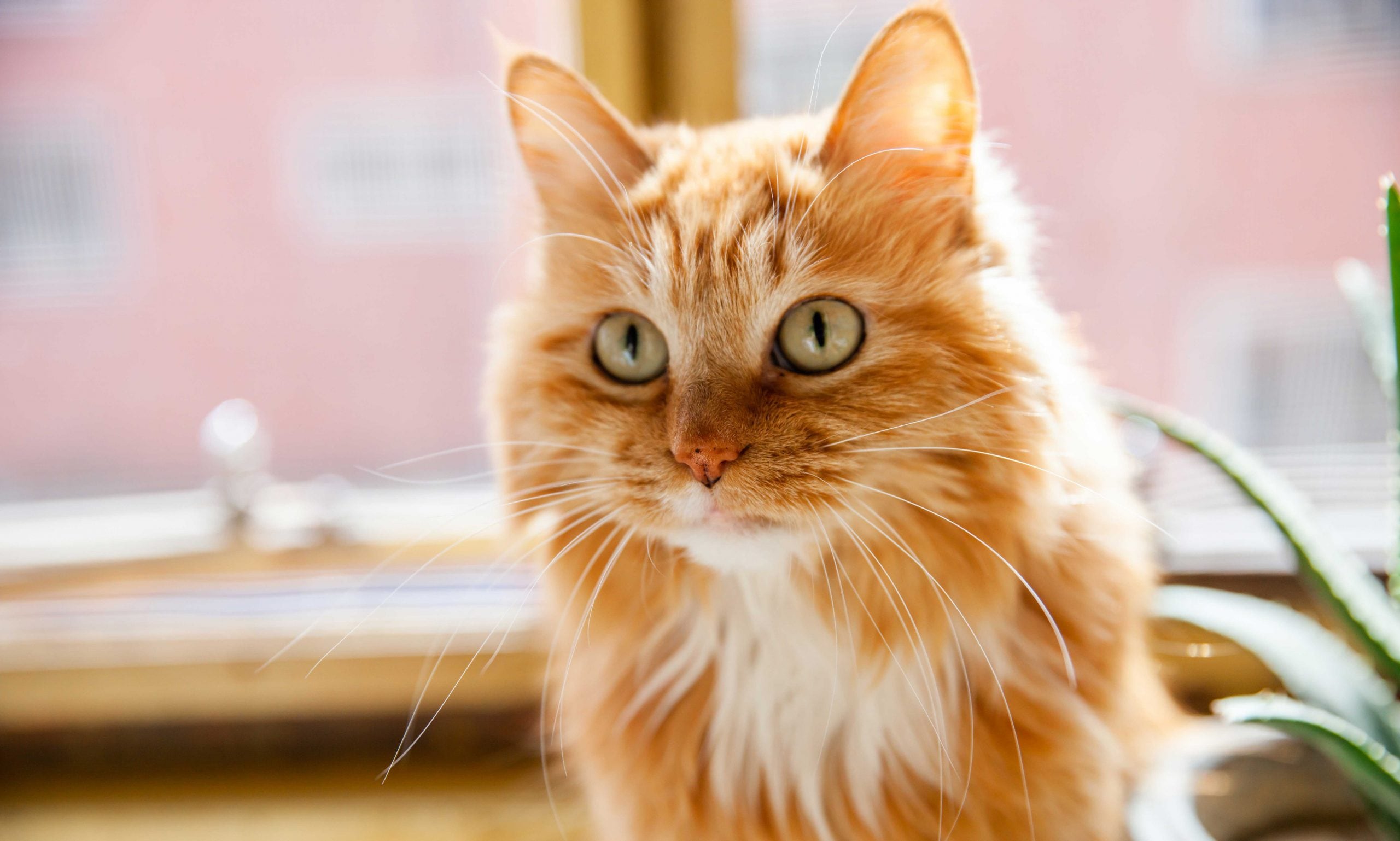
Before the appointment, consider your cat’s energy level, appetite and whether the cat is having any issues with food. This information will help your vet, who will examine your cat, including their top lip and bottom lip, and try to determine the culprit. If there’s a lesion, the vet will observe it and see if they can draw any conclusions.
The vet will also evaluate the cat’s response to treatment.
“For example, an eosinophilic granuloma should respond well to immunomodulatory medications/steroids, but a cancerous mass often worsens despite treatment,” Dr. Jacobs says. Symptoms such as oozing, scabbing or open wounds on the face may be a sign of squamous cell carcinoma.
Your cat may need additional tests such as bloodwork, X-rays, a biopsy or fine needle aspirate to nail down the cause of your cat’s lip swelling. A referral to a specialist, like a dermatologist, may also be in order.
More on caring for your cat:
Share:
